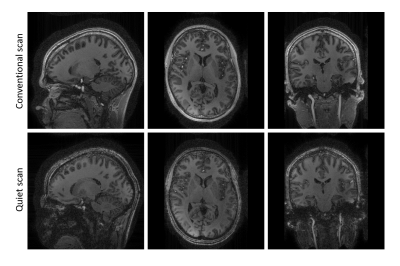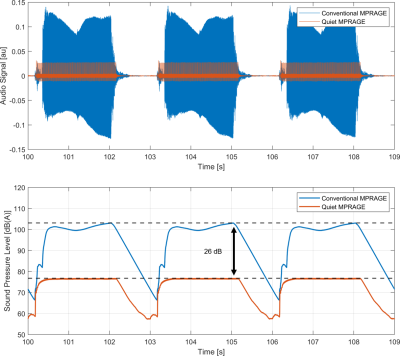Edwin Versteeg1, Sarah M. Jacobs1, Ícaro A.F. Oliveira2, Dennis W.J. Klomp1, and Jeroen C.W. Siero1,2
1Radiology, University Medical Center Utrecht, Utrecht, Netherlands, 2Spinoza centre for neuroimaging Amsterdam, Amsterdam, Netherlands
1Radiology, University Medical Center Utrecht, Utrecht, Netherlands, 2Spinoza centre for neuroimaging Amsterdam, Amsterdam, Netherlands
In this work, we implemented a silent readout module that applies a silent gradient axis (driven @20kHz) to a 3D MPRAGE sequence. The resulting sequence featured a 26 dB reduction in peak sound level and comparable image contrast and scan time compared to a conventional 3D MPRAGE-scan.


